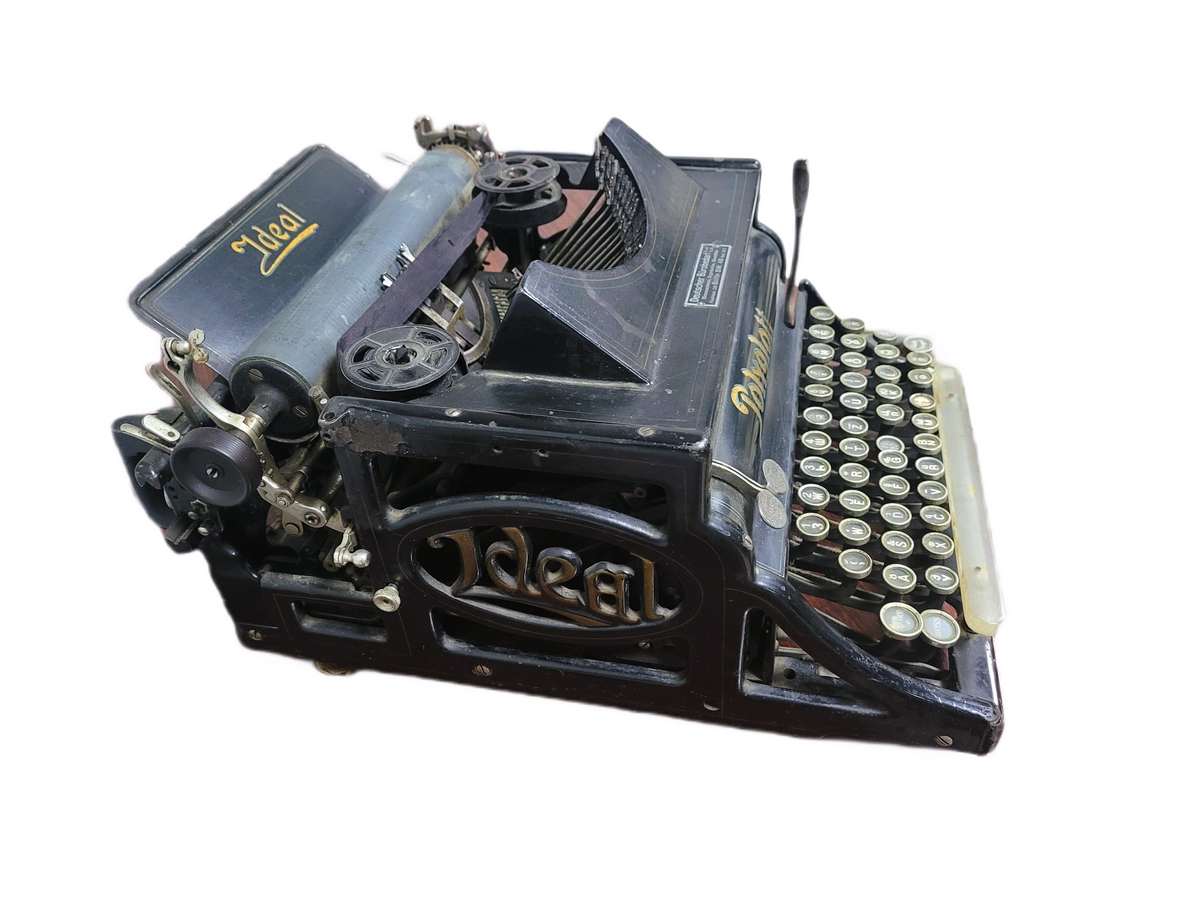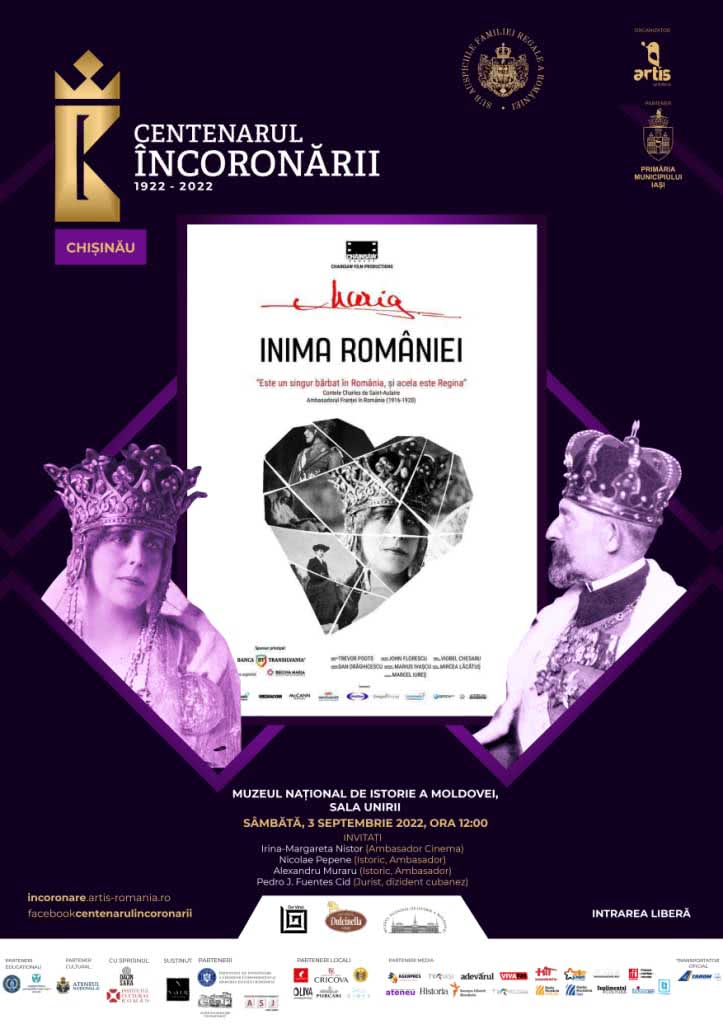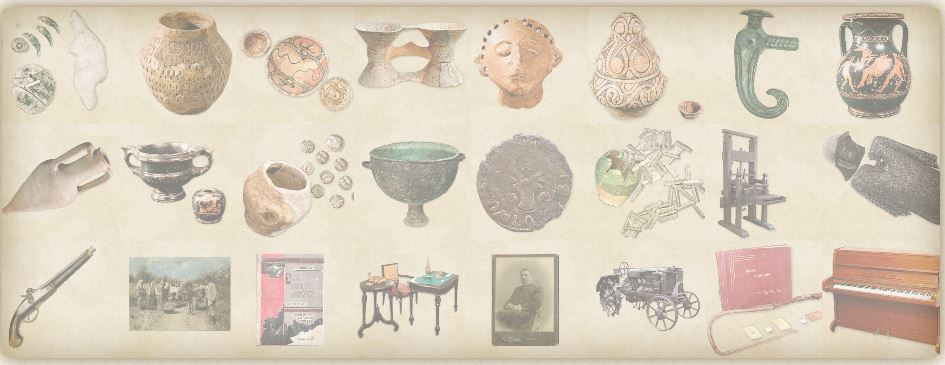A new stop of the
Coronation Centenary Caravan, a project organized by
the Artis Association in partnership with
the City Hall of the Municipality Iași,
took place between September 2-3, 2022, in Chisinau, in the presence of ambassadors
Irina-Margareta Nistor (Cinema Ambassador),
Adrian Cioroianu (Historian, Ambassador),
Nicolae Pepene (Historian, Ambassador),
Alexandru Muraru (Historian, Ambassador) and of the special guest -
Pedro J. Fuentes Cid (Jurist, Cuban dissident).
Approximately 500 students and teachers from the capital of the Republic of Moldova participated in events that marked the Centenary of the Coronation of King Ferdinand I and Queen Maria, within the project organized under the auspices of the Royal Family of Romania.
On Saturday, September 3, the National Museum of History of Moldova hosted the episode number 13 of the Coronation Centenary Caravan. It hosted experiences, confessions and emotions that reminded of Maria - the Heart of Romania.
At the end of the screening of the documentary Maria – The Heart of Romania (director Trevor Poots), took place one of the most emotional question-and-answer sessions within the project. It was a session of confessions from the spectators, many of whom were students, teachers or tour guides. The reactions were different, full of emotion and admiration.
"I come from the period when we were discussing about Stephen the Great, about the Romanian people, and I was burning with the desire to reach Romania one day. I never dreamed then that I would present Romania to tourists from the Republic of Moldova, I am a guide to this day. Thank you for making an extraordinary journey and softening my soul and heart! You came home, I've been waiting for you!"
"The most beautiful surprise for me was this museum. It is so well cared for, so inspiringly organized that it was a surprise that reached my heart, I felt at home" - Nicolae Pepene, historian and ambassador of the project.
"Talking about the Centenary of the Coronation means talking about statehood, patriotism, loyalty, steadfastness. That is, these values that Royalty and the Royal Family have embraced so well. Not only during the eight decades that the monarchy was part of the political structure of the Romanian State, but also after" - Alexandru Muraru, ambassador of the project.
"I think it's very nice that I arrived in Chisinau on Thursday, Queen Maria also came here on a Thursday, so I think she arranged it to be that way. The films have also been picked up by the History Channel here and across the ocean, so you can be sure that they're not just showing a good picture or the things that set you up for one reason or another. It's really a real history lesson" - Irina-Margareta Nistor, Cinema Ambassador.
After each film screening, there were Q&A sessions with guests present, as well as the opening of the exhibition 1922. The Year of the Coronation (curator Nicolae Pepene). Entry to all events was free.
Coronation Centenary Caravan in Chisinau was organized with the support of the Romanian Cultural Institute in Chisinau and the Dulcinella patisserie chain.
The National Museum of History of Moldova is honored to host such a large-scale event, in the hall where the emblems of royalty are at home!





 The side panels are elegantly decorated with refined cast-iron elements in the Art Nouveau style, displaying the brand name - "Ideal." The Polyglott model, featuring a bilingual keyboard patented in the United Kingdom by Max Klaczko from Riga, Latvia, was produced between 1902 and 1913, marking the first typewriter capable of writing in two languages. The "Ideal Polyglott" typewriter was actively sold in the Russian Empire and gained significant popularity in Poland, Bulgaria, and Serbia.
The side panels are elegantly decorated with refined cast-iron elements in the Art Nouveau style, displaying the brand name - "Ideal." The Polyglott model, featuring a bilingual keyboard patented in the United Kingdom by Max Klaczko from Riga, Latvia, was produced between 1902 and 1913, marking the first typewriter capable of writing in two languages. The "Ideal Polyglott" typewriter was actively sold in the Russian Empire and gained significant popularity in Poland, Bulgaria, and Serbia.

















































